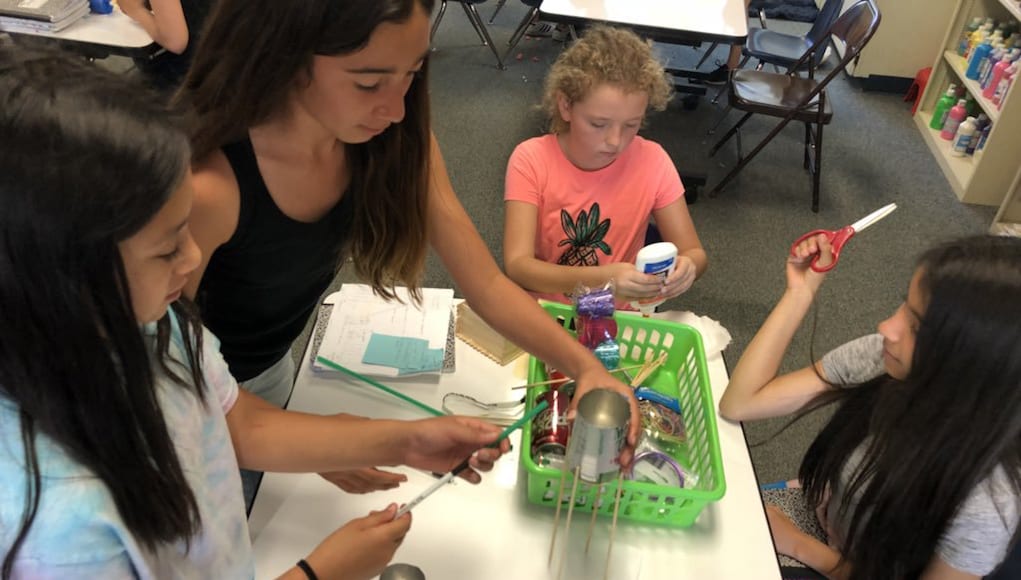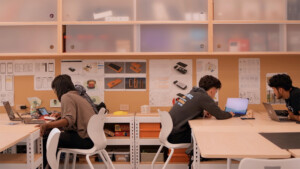What Does HQPBL Look, Sound, and Feel Like in a General Education Classroom?

By Camille Nunnenkamp
In five years of classroom teaching, I have seen education evolve and change before my very eyes. One idea, however, that has been a constant in any conversation, meeting, or content search on Google was Project Based Learning (PBL). I felt as if the phrase was being thrown around by every educator I had a conversation with, yet each person described it differently. It sounded amazing and like something that would be beneficial for my students but I had two roadblocks to consider, “What does PBL really mean?” and “Where in the world do I begin?” It wasn’t until my fourth year of teaching that I began to develop answers to these questions. That was when my school decided PBL was something we needed to implement in K-5 classrooms. We worked with Dr. Jenny Pieratt, of CraftED Curriculum who helped us understand the underpinnings and purpose of PBL. She introduced us to The Framework for High Quality Project Based Learning (HQPBL), which explains in depth the criteria for providing students with learning experiences that extend beyond the classroom walls. The six criteria are intellectual challenge and accomplishment, authenticity, public product, collaboration, project management, and reflection. This framework, along with the expertise from Dr. Jenny Pieratt, has helped me implement HQPBL in my 5th-grade classroom, and the subsequent quality of work my students have produced in displaying their learning has been truly amazing.
What does HQPBL look like?
I am currently working on implementing my second project and the HQPBL Framework has been essential in designing and working through the process with my students. When starting the design of any project, the first step is to think of a driving question that connects all learning experiences together. Thinking of a driving question can seem intimidating, however, it helps to keep in mind what experiences, wonders, and learning you want your students to have. Our latest project stems simply from a problem my students share a personal connection with trash at lunch and the amount of wasted food on our campus. After identifying an authentic problem, think about all the foundational knowledge your students need to understand in order to create an authentic final deliverable that showcases their learning. These building blocks of knowledge become mini-units that each features a deliverable from which a facilitator can understand if they have shown mastery of a topic. Measuring mastery through both the Formative Assessment process and personalized rubrics from the New Tech Network has been essential in monitoring student progress. The Formative Assessment process connects each deliverable to a learning goal and criteria for success where students are able to monitor their learning progress in each deliverable. In addition to the Formative Assessment process using personalized rubrics from the New Tech Network help to focus on each deliverable and what is categorized as emerging, developing, proficient, and advanced. Each building block helps deepen your students’ understanding of the driving question; these building blocks could include a range of content areas and activities that all relate back to the driving question.
 What does HQPBL sound like?
What does HQPBL sound like?
When I think about stepping into a 5th-grade classroom as a student, the only sound I remember hearing was my teacher’s voice. When you walk into an HQPBL classroom, it sounds a little different. That sound is the student’s voices, students collaborating with their peers and giving effective feedback on specific ways to improve. You hear organic whole class discussions connecting content areas and ultimately bringing the conversation back to the driving question. A HQPBL classroom is full of inquiry and wonder, an environment in which students want to make a positive impact on their school and the community around them. An HQPBL classroom sounds like a judgment-free zone where student ideas are supported by their peers!
What does HQPBL feel like?

HQPBL truly is a remarkable experience to watch play out through the lens of your classroom and students. HQPBL feels overwhelming at times, however, the moment students start making even the smallest connections it feels like a triumphant victory. HQPBL creates that feeling amongst students where they are pushing the boundaries of their learning to make connections to the world around them. Students feel agency in their learning and the urgency to be changemakers. As an educator, HQPBL creates a feeling of pride for my students that they are able to extend their learning beyond stating facts. They are applying their knowledge to real-life problems and delivering real-life solutions.
Why should you implement HQPBL in your classroom? Because it pushes our students to be critical thinkers, be reflective, and be problem solvers in the world around them! Follow my class adventures on Twitter to see HQPBL in action. For more examples of HQPBL projects and the integration of technology as a final deliverable visit my website, Teacher Tech Tools.
For more, see:
- Students Learn Project Management From HQPBL Experiences
- Introducing a Framework for High Quality Project Based Learning
- Designing Projects so Students Have High Quality Project Based Learning Experiences
Camille Nunnenkamp is a 5th-grade teacher, you can find her on Twitter @missnunnenkamp.
Stay in-the-know with all things edtech and innovations in learning by signing up to receive our weekly newsletter, Smart Update.







0 Comments
Leave a Comment
Your email address will not be published. All fields are required.